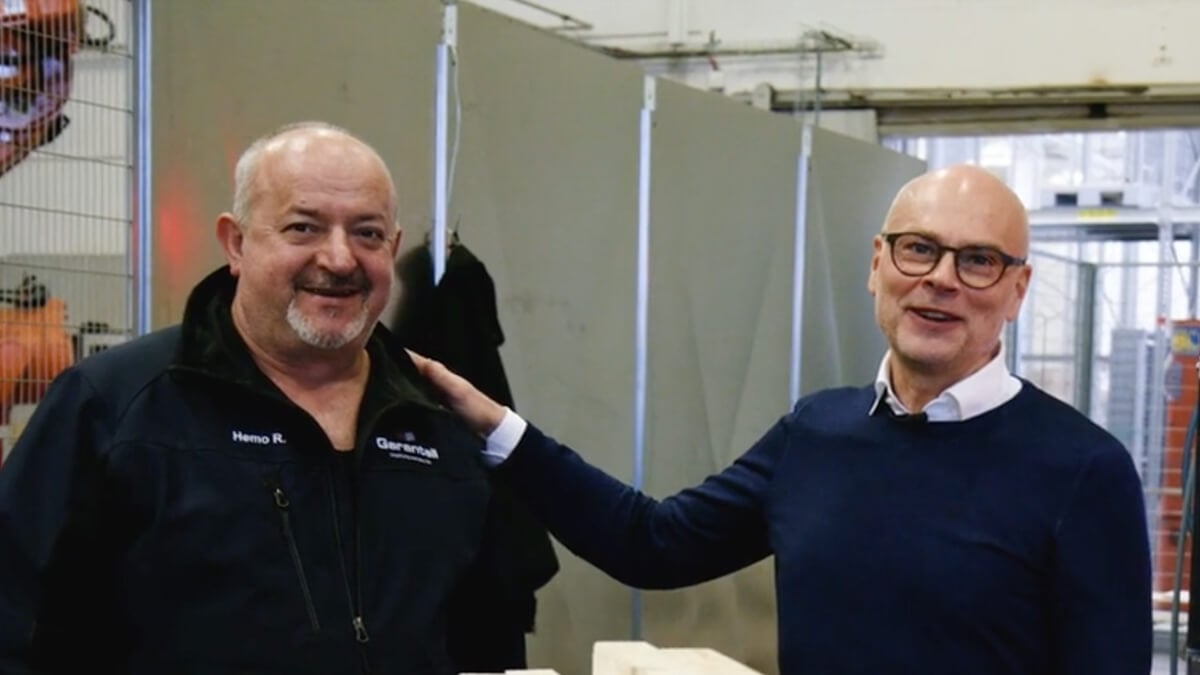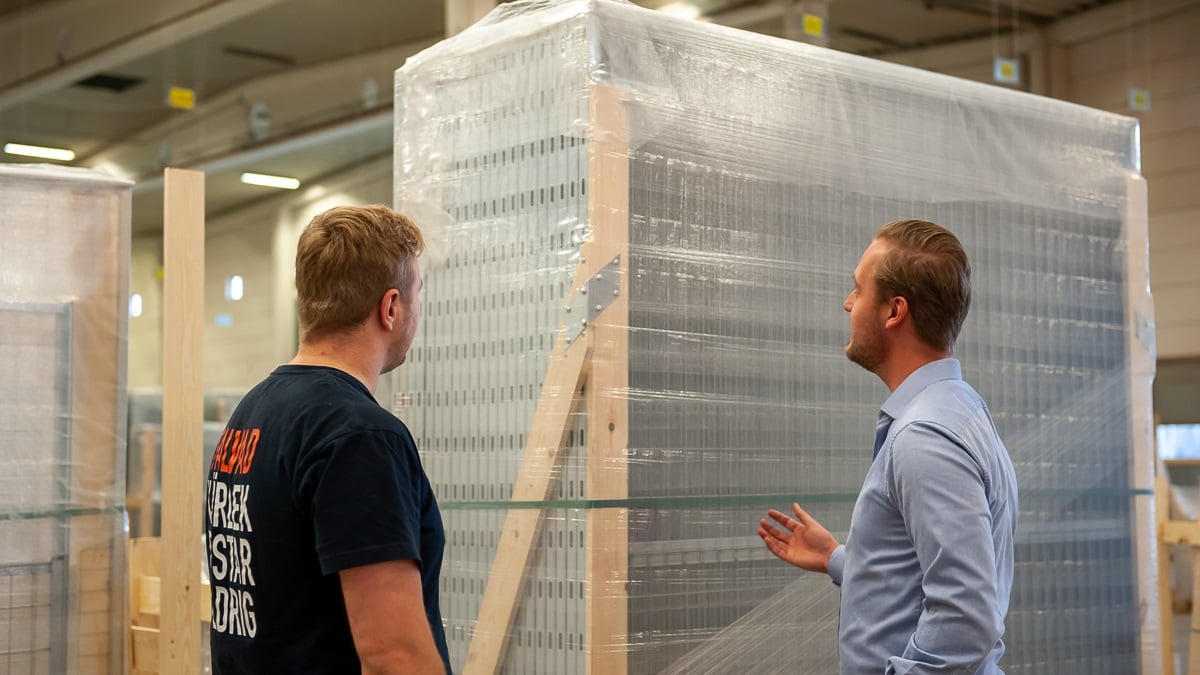Have you ever wondered how it is to work in a self-leading team? Does it sound like a dream? Or are you rather sceptical? At Garantell, we are trying to work like this. In all transparency, it is a bumpy road. And this might sound corny, but we are growing every day. I want to share some lessons learned. I think that setting shared goals, growing together, and maintaining a good working environment helps us on the way.
Me and my colleagues are working in the team Southern Europe. We have given ourselves the name Meshing Around, which kind of represents the state we are in: trial-and-error. When I first heard about the idea of us working as a self- leading team, I honestly did not know what to think about it. I even did not understand the concept completely. What is it all about? Self-leading means we get our overall goals, but we decide ourselves how to organise and achieve this. In my team, we all use different languages to communicate with our customers, so I had a hard time imagining that it could ever work. Moreover, each of us has a different working style. In the beginning, we kind of ignored being self-leading, we kept on working the way we used to do. And of course we did not reach our goal. The first thing it taught me was if working together does not result in behavioural change, the group is not a self-leading team.
When you are self-leading, it is vital to have a clear vision and shared goal. Not only to give us a clear focus and direction, but also to help us stay on track and plan. It is hard because in sales everyone wants to be best. How to get this competitiveness out of the team? It is not about selling enough in the country you are responsible for, but about reaching the group budget, meaning all the countries together. If somebody of the group made a sales record, it was hard not to envy the person and thinking this should have been me. Therefore, from an individual perspective we have to change to a collective one. The only way to do that is to realise that within the team it is important to consider all competencies both the individual, as the group and behavioral ones. The key is not a fixed mindset of competencies, but a growth one.
Transferring into a self-leading team is a great opportunity to get to know each other’s strengths and realising what needs to be improved. A growing team is a team that helps the members by sharing knowledge or information. There are many ways to share it within the team or coach each other. One of our favourites is a power session- 20 minutes training during the day on a different subject. It can have technical subjects or ones that are more commercial. We also like to share videos, which inspire us and then discuss it collectively. Furthermore, we have the project Babushka, were we work together on the to-be-conquered-Russian-market and try to learn from each other by having a true collective project.
Working in a multicultural environment has taught us that we need to be clear about our valued and non-valued behaviours and the giving of feedback. Now in times of Corona we are physically separated. But every day we have a Teams meeting to discuss ongoing projects. Some days it is just a way to talk a little and to make sure everybody is doing fine. By getting to know each other better we allow ourselves to be more vulnerable, meaning being open about admitting mistakes, asking questions and offering ideas. Because our team has many different personalities, it is necessary that everyone’s opinion is heard and taken into account.
In the beginning my feeling was: what will our manager be doing now? However self-leading does not mean we can do whatever we want. The freedom comes with responsibility. Every team had/has its struggles, especially at the beginning. Therefore there is nothing wrong in reaching for help to your manager. Moreover it creates more transparency and trust between us. But our manager has become more a coach and to be honest I talk more with my team members than with my coach. This was before the other way round.
Furthermore we realised that sometimes as a self-leading team, we take decisions that affect others. To go ahead without consulting them is not ok. We are given the right to decide, but the duty to ask for advice of both experts and people impacted by the advice. Here our coach helps a lot. That being said, the fewer control put on a team, the better. Our manager is aware that if she constrains our team to solve the challenge, self-organization will just not happen. The team will shut down; because it has already been told so how to solve it, it will wait to hear the rest. The main goal of our manager is to challenge us and to discuss with us (sometimes unpleasant) questions to get there. And this is a process of trial and error.
Working in a self-leading team has taught me a lot about the people in my team as well as about me. I think the above tips will help you and your team to start the process but do not forget being patient because it requires a lot of time, work and the adequate mindset!

Light has always had a special place in Sweden. Even in the darkest of winter, as I walk through the city streets there are lights in every window from candles, lamps, and Christmas decorations illuminating the snow clad buildings. It makes me realise how much people actually miss sunshine and long summer nights. The longing for light in Sweden culminates around one of the shortest days of the year- December 13, called “Luciadagen”.

In a company where growth is in constant focus, it is easy to end up in a situation where you constantly ‘just have your head above water’. You know the feeling? The focus is on machines and productivity. You forget things like employee well-being, work environment and tidiness. We are trying to change that! We believe that everything is connected. Order, quality, employee well-being is in line with customer satisfaction. How do we work with this? On many levels actually, but this time I thought I would tell you about our work with property, work environment and the group that has been working with this. Here are some tips to make the workplace more pleasant, based on our experience. Maybe you can get inspired by it!

Remember the moment when the clock struck twelve and you made all these New Year’s resolutions? Eating healthier, moving more? It has been more than seven months now. How is it going? Surveys show that less than 50% of the people are able to keep their promises for more than a couple of months. But do not feel unsuccessful, it is never too late to start a new habit. My tip is not to promise, set goals instead. Then you can have intermediate goals, rewarding yourself. If you miss an intermediate goal, well it is not a disaster, you have a new chance for the next intermediate goal. This feels much better than breaking a promise.


It went so fast. One cannot completely grasp it, but we have a spring feeling in our cold country. We went from -18 to +8°C in one week, so we really did not have the time to let it sink in. The snow melted at a furious pace and most of us removed skates and skis to make room for bicycles and boats…

Digitalization is important to Garantell. From our customers drawing mesh decks, machine guards, rear mesh in the Garantellator online to producing it, everything is automatic. But digitalization is only a tool. Our self-leading teams are at the heart of our company. How those two go together explains our chairman Mikael Axelsson. This time around he has not written a blog, but we made a vlog. Watch it here:

In today’s world, it is important to keep on your toes and be well-prepared for whatever the day has in store. This is so much easier to achieve when you have employees around you with different experience and knowledge. Perhaps you have read the previous blog posts “Different Nationalities, Shared Strength” and “Shared Breakfast, Nourishment for the Soul”, written by a couple of my colleagues. They give the impression that we are like a bag of mixed sweets – a great many people from different countries and different departments. And that really is true. Garantell has all functions and departments under one roof, from Production to Sales, from Development to Painting.

Everything started when I left my beloved Iraq in 2015 and came to Sweden. I had to leave a life, a family, a career and a future. Everything. To start anew. In the middle of summer 2018, I entered Swedish working life. It was Garantell who opened the doors for me. I can clearly recall the day I biked through the fragrant and dense forest to get to Speditörvägen 8. Things I knew for certain: That day was the beginning of a new chapter in my life in Sweden. I was more than ready, full of gratitude and brimming with curiosity. I had great expectations and felt a strong drive.

Time is one of the few things in life that is truly equal – no one can complain or insist that the quota is unfair. Although, the 24 hours a day we all have at our disposal can be utilised or wasted in various ways. However, only the things we manage to accomplish endure over time.

This year, many traditions have had to take a back seat. Due to the spread of the coronavirus, there are restrictions regarding the maximum number of people permitted to gather in one place, and festive events have had to adapt. This has affected the ability to hold everything from weddings to funerals in the usual way. Online funerals have become common in Sweden, while holidays such as Midsummer, crayfish parties or birthdays have been celebrated within the immediate family instead of as is usually the case with the extended family and friends. Christmas, which is considered the major holiday period in much of Europe, is now on the horizon. That too will be different for many people this year, as older relatives are unable to participate in the festivities in the same way as usual.